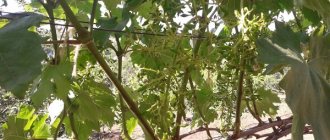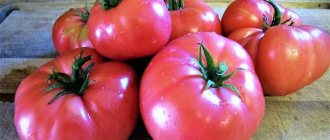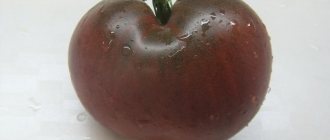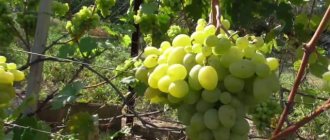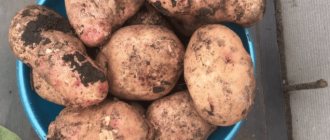History of variety selection
The “Original” grapes are a product of selection and the real pride of Ukrainian plant growers. This variety was bred in 1970 by a group of scientists from the Institute of Viticulture and Winemaking named after Vasily Egorovich Tairov. The hybrid in question was obtained by crossing the Damask Rose and Datier de Saint-Valier varieties.
As a result of long-term work by scientists, the hybrid acquired only the best qualities of the original varieties - it is a highly productive variety of grapes, distinguished by its unusual shape and color of berries.
Did you know? Until the second half of the 19th century, cultivated grape varieties in Europe could grow and bear fruit for about 150 years. But after the appearance of phylloxera (an insect pest) in 1863, their life expectancy decreased sharply.
Description of the grape variety "Original"
“Original” is a medium-late ripening table grape, suitable for technological processing, as well as fresh consumption. In temperate climates, fruit ripening occurs in the second half of September, which makes it possible to enjoy the fruits throughout the fall.
Description of berries
The berries of the variety are large, juicy, fleshy, with a dense peel, elongated in shape, slightly elongated at the edge and rounded on the sides. The peel separates well from the pulp. The average weight of the berry reaches 12 g, and its dimensions are 32x20 mm.
Their color is varied; depending on the hybrid, the shade can vary from white to pink and dark blue, almost black. One berry contains no more than 2-3 seeds.
Description of the bush
The bush variety is large and tall. The leaves are large, five-lobed, with characteristic slight pubescence. During flowering, small bisexual flowers are observed on the plant. During cultivation, the vine can fully withstand the weight of the crop, so the bushes do not need staking.
On average, about 6–7 bunches of berries appear on one shoot. The number of fruiting branches of an average bush is at least 65% of the total mass, while more than half of the young branches become woody during one growing season.
Characteristics of the bunch
Large loose clusters of regular conical shape, slightly pointed at the end, ripen on the bush. The average weight of one bunch reaches 500–800 g, but under optimal conditions it can increase to 1000–2000 g. The fruits are practically not adapted for transportation; under medium and strong mechanical stress they burst and crumble.
Characteristics of the variety
The Original got its name thanks to the berries, which, due to their elongated ovoid shape, really look very distinctive. Also, due to their shape, the grapes stick out in different directions in the bunch, resembling a hedgehog. This is one of the largest-fruited varieties - the weight of the berries reaches 6–7 g. The bunch grows to gigantic sizes and weighs 500–600 g, and under favorable conditions its weight can be 1 kg or more.
The pink-skinned fruit contains one or two seeds. The pulp is juicy and has a simple, but at the same time harmonious taste.
The leaves of the Original are large, pubescent on the underside, and medium-dissected. The vine is vigorous.
The original is a table variety with a yield coefficient of 1.2–1.7. The rooting rate of cuttings is average. The growing season lasts 135–145 days, so harvesting begins at the end of summer or, in more northern regions, at the beginning of September. The variety's transportability is average due to the weak attachment of the berries to the stalks.
The bush can withstand frosts down to –21°C and requires shelter for the winter.
Research has revealed that the Original variety has average resistance to diseases: mildew, oidium, rot.
To ensure even ripening of the berries in the bunch, it is recommended to remove some of the leaves during the summer, which will allow the nutrients to concentrate in the grapes.
Photo gallery: appearance of Original grapes
The weight of one bunch of Original grapes often exceeds 1 kg. Original grapes, colored light pink, can weigh up to 7 g
The Original grape variety is harvested in late August - early September
Advantages and disadvantages of the variety
- The main advantages thanks to which “Original” became popular:
- unusual shape of bunches and berries;
- rapid growth of the bush;
- large formations, with the help of which you can increase the yield of the plant;
- long shelf life of the crop;
- resistance to rot and other fungal infections.
Did you know? The oldest grape variety in the world is considered to be the Limnio variety. This plant has been widely cultivated since antiquity.
—
more than 3 thousand years ago.
- The variety is not without its drawbacks, the main ones being:
- low frost resistance;
- lack of immunity to felt mite;
- predisposition to peas of berries (in case of bad weather during flowering);
- fruits can form on stepsons, which reduces the actual yield of the bush by several times;
- unsuitability of bunches for long-term transportation.
Varieties
The main characteristics of the three varieties of “Original” grapes are given in the comparative table:
| Characteristic | Black Original | White Original | Pink Original |
| The number of days required for the berries to reach ripeness. | Mid-late 135–145 | Mid-late 140–150 | Mid-late 135–145 |
| Bunch weight | 500–800 gr. | 500–700 gr. | 1000 gr. |
| Berry weight | 7–9 gr. | 6–8 gr. | 7–9 gr. |
| Taste | Sugar content:
Acidity: | Sugar content:
Acidity: | Sugar content:
Acidity: |
| Bushes | Vigorous | Vigorous | Vigorous |
| Frost resistance | -24°С | -24°С | From -23°С to -26°С |
| Disease resistance | High | High | High |
Comparing the parent variety with its varieties, we can note the differences:
- varieties have greater frost resistance;
- pink “Original” has the highest sugar content with the lowest acidity;
- Pink “Original” also has the largest clusters and berries.
The parent variety "Original" and its varieties are valuable for their large clusters of elegant berries and have been in demand on the market for more than 40 years.
Features of growing the “Original” variety
Growing grapes on the plot is not difficult - this crop is considered unpretentious. However, in order to achieve rapid vine growth and high yields, you should definitely take care of the right place for planting, as well as carry out a number of preparatory measures. Without this, the plant may be sick for a long time and often refuse to take root.
Choosing a landing site
Since the described variety loves a warm and mild climate, it is best to plant “Original” on the south side of the site.
This is one of the main requirements when cultivating a plant, since only on the south side will it receive the maximum amount of light and heat, which are important for proper development and fruiting. In addition, on the south side, young cuttings will take root very quickly, which will help them endure winter frosts painlessly.
Important! If the grapes are not planted on the south side, their planting depth should be increased by 20 cm. This will help preserve the root after wintering even if rooting is poor.
Boarding time
There are two methods of planting grapes: spring and before winter. In spring, planting is carried out in mid-April, before young leaves bloom on the vine. In autumn, the grapes are rooted in early October.
Today among gardeners there are many discussions about the advisability of this or that method, but the plant takes root best in the spring. At this time, the most active metabolism is observed, which directly affects the speed of adaptation of the sprout to the natural environment.
In addition, when planting grapes for the winter, it is necessary to cover them, which further complicates their rooting.
Preparing the planting hole
In order for young seedlings to quickly grow, you need to carefully approach not only the choice of planting material, but also the preparation of the site.
To do this you need:
- Choose the most level area of soil or a place on a small hill.
- Dig a hole 80x80 cm.
- At the bottom of the hole, lay a 10 cm layer of compaction made of small crushed stone or broken brick. If your site has soil with high moisture capacity (clayey, loamy soil, chernozem), you can refuse the procedure.
- Place a 10 cm layer of fertilized soil on the bottom, and then water the hole well.
- As soon as the water is absorbed, you need to put 3 kg of organic fertilizers (manure) in the hole, and pour a mixture of 300 g of wood ash, 250 g of superphosphate and 100 g of potassium nitrate on top.
- Next, the hole is filled with soil to 1/3 of the initial volume, after which the cutting can be successfully planted in the resulting hole.
Caring for young and mature vines
Proper care of the “Original” variety is one of the main components of high yield. Particular attention should be paid to watering and fertilizing. Young and adult bushes are watered no more than 3 times per season, but abundantly, soaking the soil to the lower horizons. In humid climates and rainy summers, watering can be omitted.
Young vines less than 1 year old are not fed; mature ones are fertilized once per season, in the spring. For this purpose, complex nitrogen solutions are used at a rate of 100 g/10 l of water/1 bush. Once every 3 years, the grapes will be fertilized with organic fertilizers (manure) at a rate of 6–7 kg/m² of plantings.
In the first year of rooting, grapes require minimal care. At this stage, it is important to ensure that useless shoots do not form on the plant, so by autumn only 3-4 of the strongest branches are left on the bush.
It is also important for a young plant to have a sufficient amount of oxygen in the soil, so it is well loosened 1-2 times a month. As the seedling grows, it needs to be tied to a support, otherwise you will end up with a bush form that is too difficult to maintain.
Caring for adult bushes is more painstaking; the highest yield of the plant is observed on shoots aged 2–3 years, therefore, as they grow, old woody branches are gradually removed. The procedure is carried out in mid-spring, before the start of active growing season, or in the fall, after harvesting.
In addition, a mature vine necessarily requires normalization of the load, otherwise under the influence of heavy bunches it may break off, which always ends in loss of yield.
Also, the correct distribution of bunches on the bush helps to achieve the fastest ripening of the crop, which is one of the most important factors for temperate and northern climates. The procedure is carried out 2 times per season, in early autumn and mid-summer.
In the spring, young, woody parts and tops are removed - this helps to form an easy-to-maintain bush and avoid wasting the plant’s energy on ineffective shoots. After the ovary has formed on the bush, it is thinned out, evenly distributing the developing fruits.
The number of bunches on one fruit shoot depends on the weight, climate, growing conditions and gardener’s experience. Under optimal conditions, it is recommended to leave no more than 2 clusters on one fruiting shoot. But if the variety is grown in a cold climate, it is recommended to leave no more than 1 bunch, otherwise the crop will not have time to ripen.
Preparing for winter
If you grow crops in a temperate or northern climate, the grapes must be prepared for winter. The procedure begins long before frost, in mid-autumn. Unnecessary, damaged and dry shoots are removed from the grapes, leaving only a viable vine with potentially active buds.
Important! After snow falls, it is recommended to additionally cover the grapes with snow, which will significantly improve the thermal insulation properties of the shelter.
When there is a distinct decrease in the average daily temperature, the grapes are covered.
For this:
- Lay dry spruce or pine boards along the grape bed.
- Loosely tie the branches of the bush together and lay them on the boards.
- Create a protective dome of metal mesh or arcs around the branches, and then cover it with polyethylene or a special covering fiber. They can be replaced with straw, hay or sawdust, and such a layer should be at least 10–15 cm thick.
Features of grape propagation
The variety in question is capable of propagation both by seeds and parts of the bush. Propagation by seeds is rarely used in crop production. This method quite often leads to the degeneration of the variety, which affects not only its yield, but also its morphological qualities. Consequently, seeds are germinated only in laboratory conditions, when developing new varieties.
Grapes are propagated vegetatively (by parts of a bush) everywhere. This method makes it possible to obtain rooted plants both in spring and summer. Traditionally, spring propagation is considered more preferable, as it makes it possible to root the grapes in just a few weeks.
For the procedure, cuttings are used - viable parts of the shoot about 30–40 cm long. To harvest planting material, only young shoots about 1 cm thick, with at least 2-3 viable eyes, are used. Their germination is not difficult and is carried out according to a scheme similar to planting (according to the method described above).
Reproduction of the variety
The easiest way to get a good and strong seedling is to buy it at a nursery. But if you wish, you can grow it yourself. To do this, after pruning, you will need to select a healthy vine up to 40 cm long.
Rooting cuttings
Important! For propagation, it is best to take young shoots no thicker than 1 cm.
It is worth checking for at least three good buds on the branch, then place it in a container with water. When strong roots appear, the seedling can be transplanted into a flower pot.
Since the main pruning is carried out in the fall, the best shoots can be obtained at this time of year. When spring comes, the seedling is transplanted into a prepared place and cared for as usual.
Diseases and methods of their treatment
As mentioned above, the variety is quite resistant to various diseases, however, due to the culture’s predisposition to infections, even it gets sick quite often. The most common diseases of grapes are fungal infections, which lead not only to pathologies of foliage and shoots, but also to deterioration in the quality of the fruit.
The most common diseases of the “Original” grapes and their symptoms are shown in the table:
| Disease | Main features |
| Downy mildew | yellow spots with white inclusions similar to cotton wool are observed on the leaves |
| Powdery mildew | a gray coating appears on the leaves and berries |
| Alternaria blight | light brown spots on foliage |
| Gray rot | light gray coating on all parts of the bush |
| Black rot | brown spots appear on the berries, which soon lead to their withering and rotting |
| White rot | light white coating on the berries and stalks of the bunches |
If the above pathologies appear on the plant, it is recommended to treat the diseased bush twice, with an interval of 14 days, with complex fungicides.
Most often, two types of drugs are used for these purposes:
- local influence - have a superficial effect without penetrating into the plant tissue. The most popular of them are the drug “Zineb”, a solution of colloidal sulfur and Bordeaux mixture;
- systemic action - penetrate into all tissues and liquids of the plant. The most effective solutions are Ridomil, Vectra and Falcon.
Reviews on growing “Original” grapes
The original is a very good grape variety, suitable for cultivation in rather difficult weather conditions. Beautiful appearance, original coloring and subtle taste justify its name. It so happened that this winter several bushes were left uncovered, but nevertheless the original survived and is developing normally. True, the loss of vines and buds on these bushes is quite noticeable. Yes, it becomes smaller and does not ripen on the shoots; mildew is observed at the beginning of summer. but this in no way detracts from its merits.
master53
https://www.vinograd777.ru/forum/showpost.php?s=9058878bc3574f771a2b7ce0d4c644cb&p=1376&postcount=2
In my opinion, the variety is not bad at all. With good care, an impressive bunch, a fairly large berry of an interesting shape, a very decent taste. But every variety has disadvantages. And this one too - when fully ripe, the berry is not firmly held on the ridge and has a slightly runny consistency. I planted it under the southwest windows for shading instead of blinds. I didn't make a mistake. And the shade is wonderful (it grows strongly), and we eat grapes in September from the main clusters, and in October from the stepson ones.
Nikola
https://www.sadiba.com.ua/forum/showpost.php?s=a8167fe620ee3dce5c99d0e1c464eb82&p=954204&postcount=7
Main characteristics
One of the main advantages of the variety is high yield. So, in the case of industrial cultivation, about 100 centners of berries can be collected from 1 hectare. When grown on private farmsteads, the yield depends on the care of the bushes and climatic conditions and averages 40-100 kg/bush. It is also worth noting such high-yielding varieties as “Arcadia”, “Jupiter” and “Delight”.
Maturation period and class
“Original” is a medium-late ripening variety. It takes about 135-150 days for the berries to fully ripen , i.e. the harvest can be harvested in the second half of September.
Bush
The plant is a vigorous, large, lush and spreading bush, reaching a height of up to 3 m. The shoots are distinguished by their vigor of growth, reaching 7-8 m in length.
The leaves are wide, five-lobed, strongly dissected, and dark in color. The edges of the leaf blades have shallow teeth, and the reverse side has white pubescence.
During the flowering period, small bisexual flowers are formed on the bushes, so the variety is capable of self-pollinating, and its fruits, under favorable weather conditions, are not prone to peas.
Bunches and berries
After flowering, 6-7 large, loose or moderately dense conical clusters appear on each shoot, each weighing from 500 to 800 g. However, with proper care and a favorable climate, their weight can reach 1-2 kg. The brushes of the black “original” weigh the least.
The fruits are quite large: when fully ripe, each of them is 3 cm long, 2 cm in diameter, weighs 5-7 g, sometimes there are specimens weighing 10-12 g.
The berries are elongated, slightly pointed at the bottom, covered with thin, delicate skin, which, depending on the variety of grape, can be pink, black or white-pink.
The pulp is juicy, does not have a strong aroma, and becomes a little watery if the berries are collected much later than ripening. Each grape has 1-2 small seeds inside.
The fruits contain 15-21% sugar and 6 g/l acid, with the exception of the white variety, whose acidity is approximately 8 g/l.
Reference! In the sun, the fruits of pink grapes become purple, black grapes become red, and white berries become greenish in the sun.
Taste
The taste is simple, but rich and harmonious, largely depending on the sugar and acid content. The peel is practically not felt when eating.


